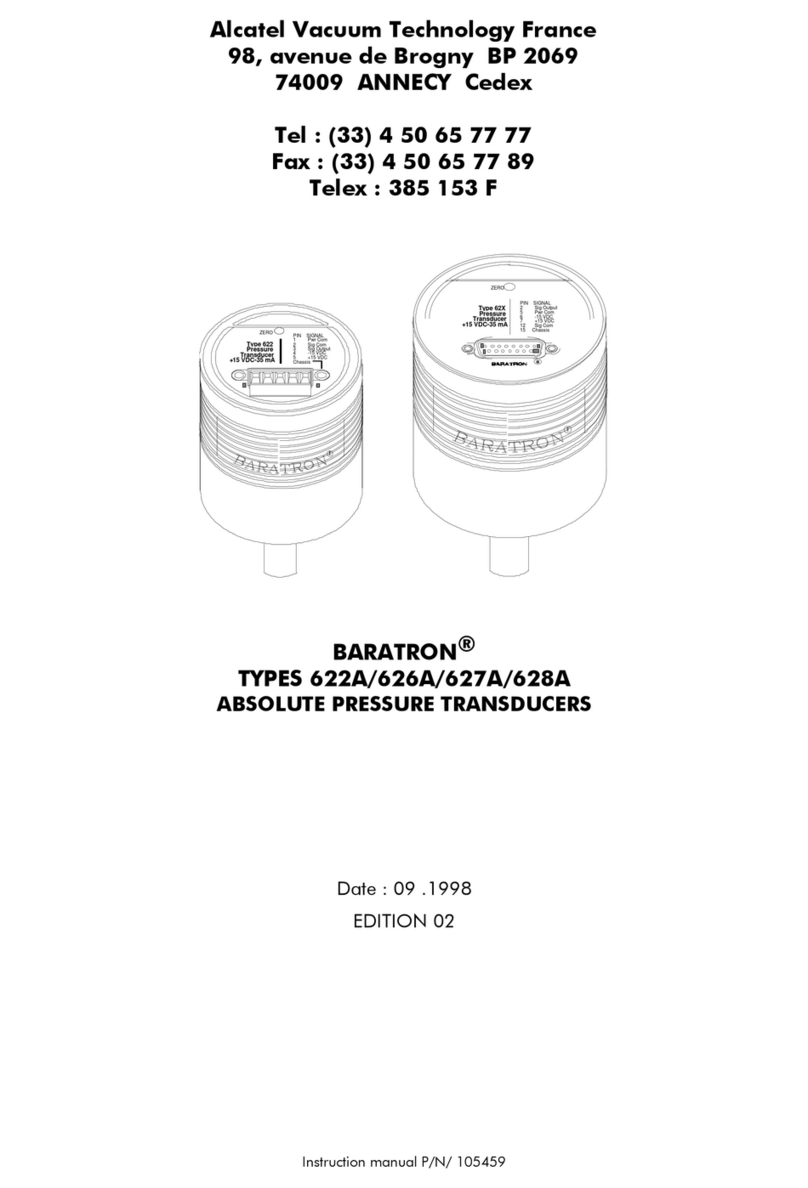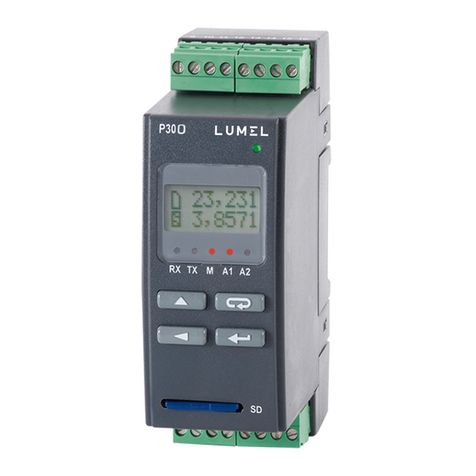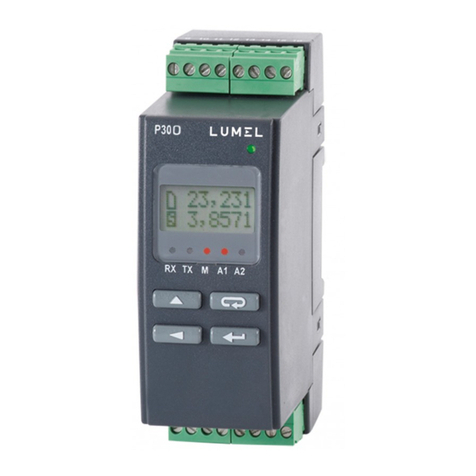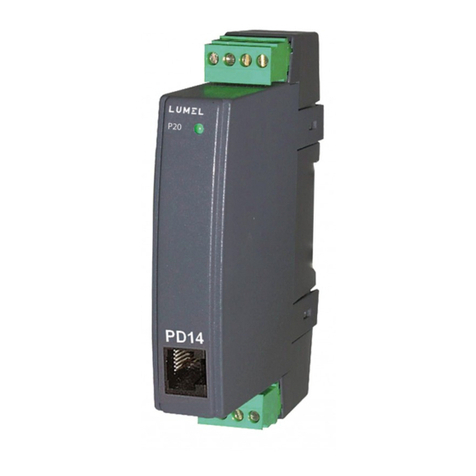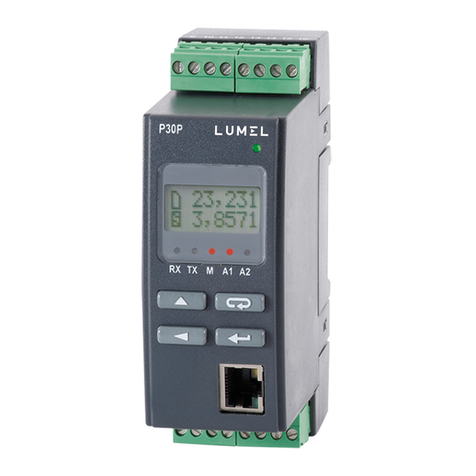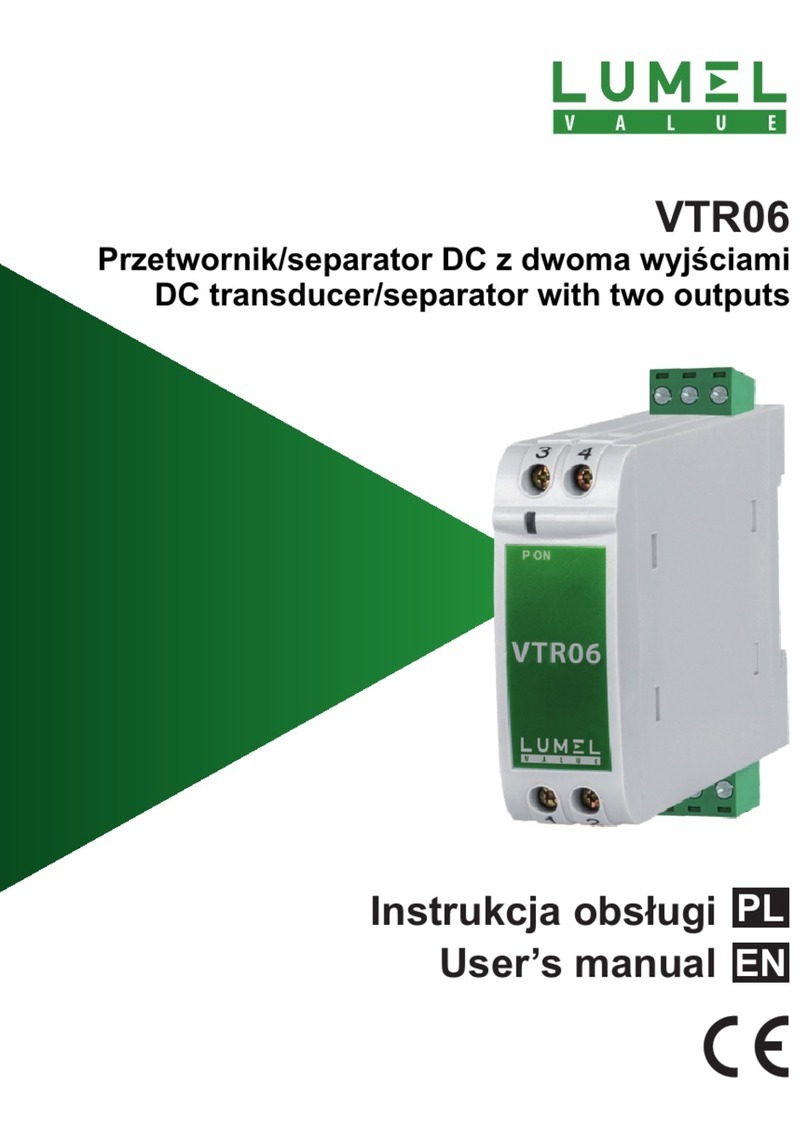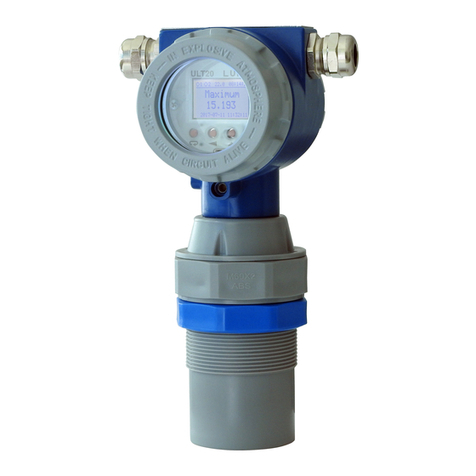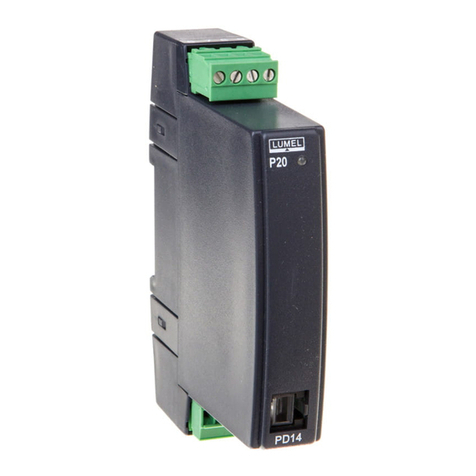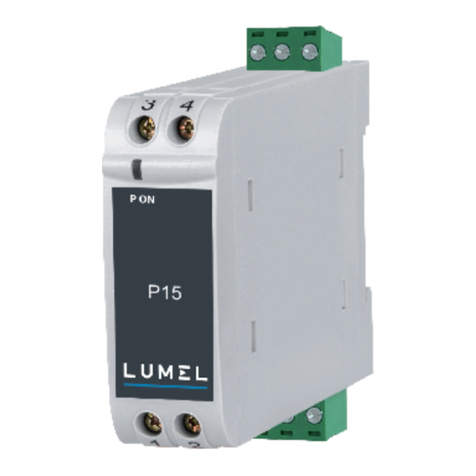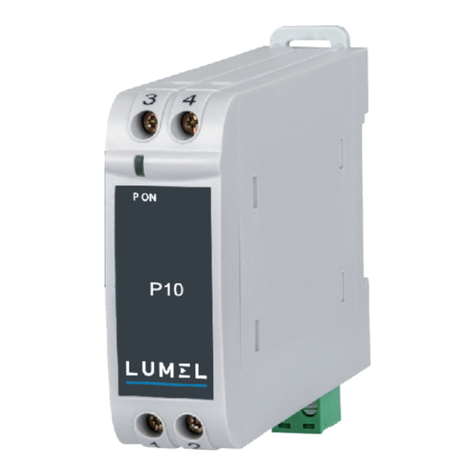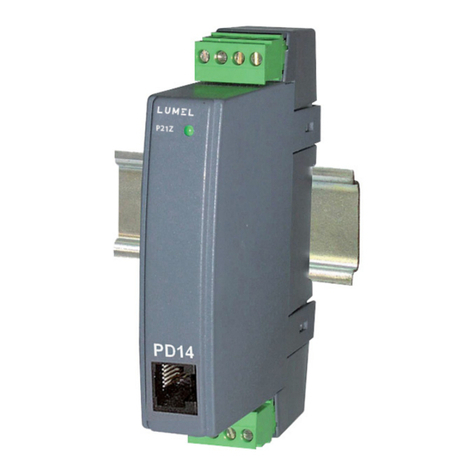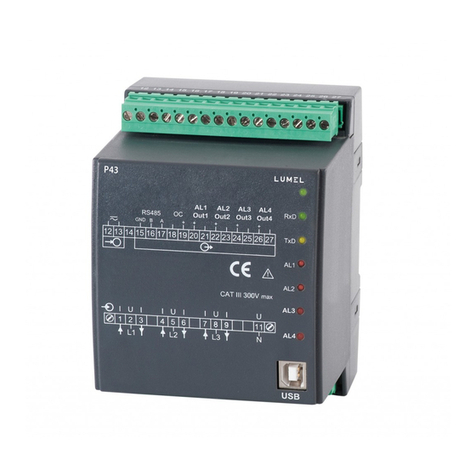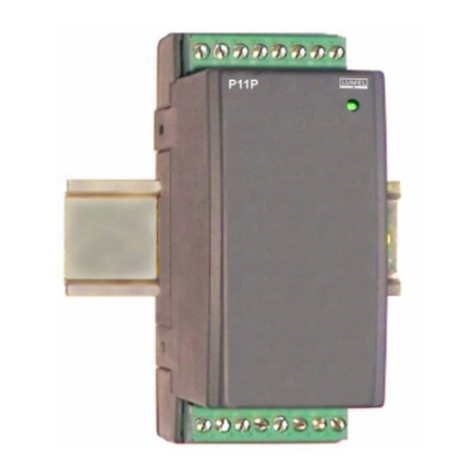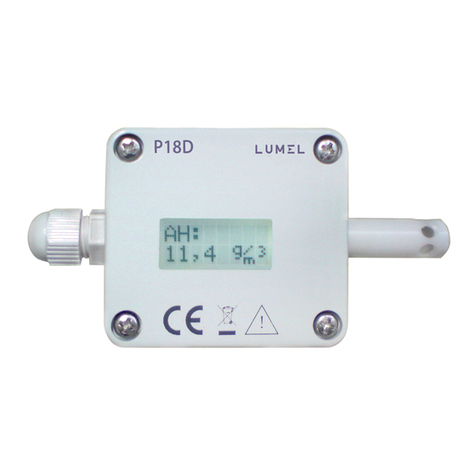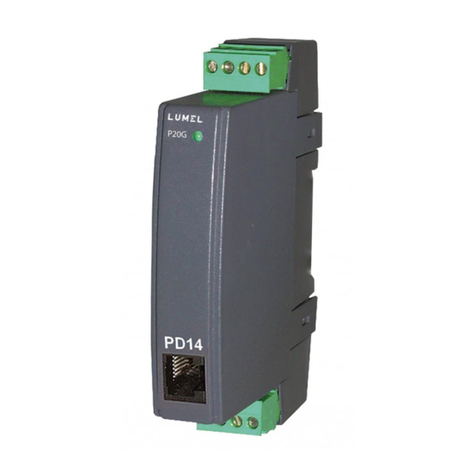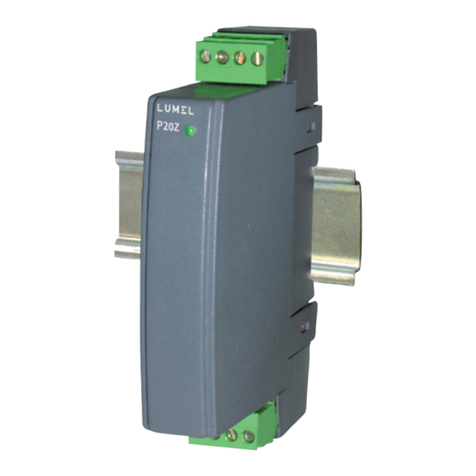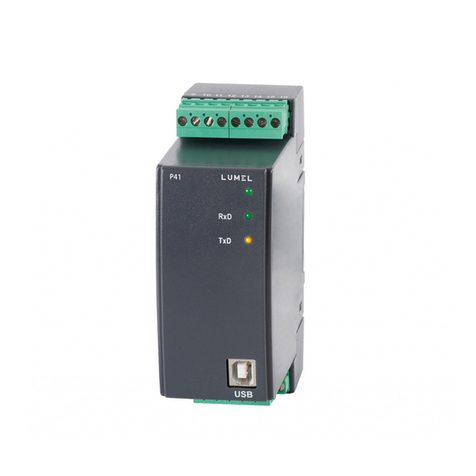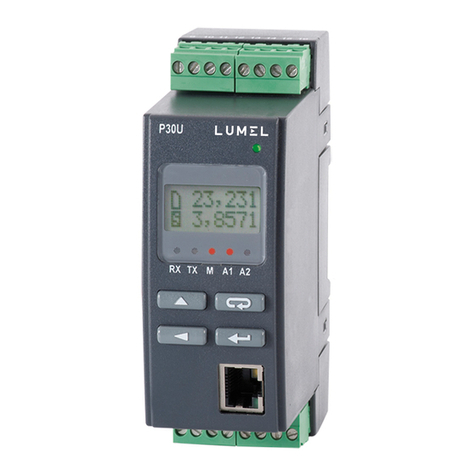5
1. APPLICATION
The P43 transducer is a programmable digital instrument destined for
the measurement and parameter conversion of 3 or 4-wire three-phase
power networks, in balanced and unbalanced systems.
It ensures the measurement and conversion of measured values into
standard analog current signals. Two relay outputs signal the overflow
of selected quantities, and the pulse output can be used for the con-
sumption monitoring of the 3-phase active energy.
Quantities measured and calculated by the transducer:
phase voltages ...................................................... U1, U2, U3
phase–to-phase voltages ..................................... U12, U23, U31
3-phase mean voltage .......................................... U
phase-to-phase mean voltage ............................. UPP
three-phase mean current..................................... I
phase currents ..................................................... I1, I2, I3
phase active powers ............................................. P1, P2, P3
phase reactive powers .......................................... Q1, Q2, Q3
phase apparent powers ........................................ S1, S2, S3
phase active power factors................................... Pf1, Pf2, Pf3
reactive/active ratio of power factors .................... tgM1, tgM2,tgM3
three-phase mean power factors .......................... Pf, tgM
three-phase active, reactive and apparent powers ... P, Q, S
active mean power (e.g.15 min.)........................... Pav
three-phase active and reactive energy ............... Ept, Eqt,
frequency ............................................................. f
The transducer possesses an archive, in which 1000 last mean power
values suitably synchronized with the clock (15, 30 or 60 minutes) are
stored.
Maximal and minimal values are measured for all quantities. Additional-
ly, there is the possibility to accommodate the transducer to external
measuring transducers. The transducer has a detection and signaling
of incorrect phase sequence. The actualization time of all accessible





